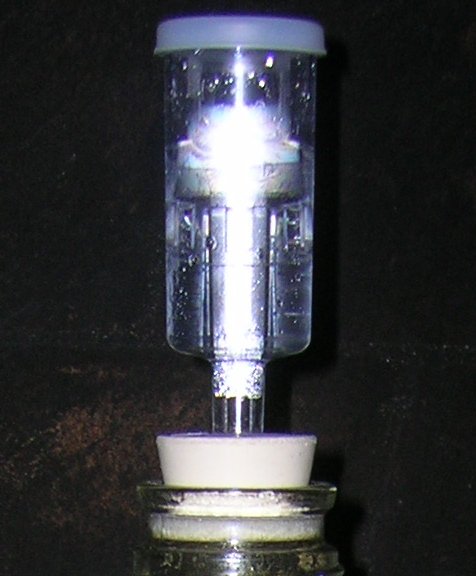Hi all, I noticed we didn't have a thread here for sharing homebrew recipes for making beer/wine.
Please don't post any recipes that you get from a book, use ones that you've come up with on your own! If you list ingredients, list the amounts! Don't forget boil time, yeast type, etc. etc.
Here's a cider I just made using mostly improvised ingredients. It turned out to be crisp and tart with a medium alcohol content, light body, and nice twinge of lambic sourness.
Muscadine Cider
4 Lbs. Muscadine Grapes, Crushed
5 Lbs. Long-Grain Rice
5 Lbs. Sugar
4 Cinnamon Cloves
2Tsp Vanilla Flavoring
2 Packets Baker's Yeast
Combine ingredients with ~4.5 Gallons water. Bring to a boil and maintain about 20 minutes. Cool and transfer to your primary fermenter. Sparge to 5 gallons. Pitch yeast @ 65-70 F (two full packets)
Ferment ~ 3wks or until yeast settles and airlock activity subsides.
Extract ~ 5 cups of the cider from primary fermenter. Add to a saucepan and dissolve in another 1/2 cup sugar over med heat. Cool and add back to fermenter.
Bottle.
Allow to bottle ferment for another week or so. Chill and enjoy!
Next week: My Irish Red Recipe!
Please don't post any recipes that you get from a book, use ones that you've come up with on your own! If you list ingredients, list the amounts! Don't forget boil time, yeast type, etc. etc.
Here's a cider I just made using mostly improvised ingredients. It turned out to be crisp and tart with a medium alcohol content, light body, and nice twinge of lambic sourness.
Muscadine Cider
4 Lbs. Muscadine Grapes, Crushed
5 Lbs. Long-Grain Rice
5 Lbs. Sugar
4 Cinnamon Cloves
2Tsp Vanilla Flavoring
2 Packets Baker's Yeast
Combine ingredients with ~4.5 Gallons water. Bring to a boil and maintain about 20 minutes. Cool and transfer to your primary fermenter. Sparge to 5 gallons. Pitch yeast @ 65-70 F (two full packets)
Ferment ~ 3wks or until yeast settles and airlock activity subsides.
Extract ~ 5 cups of the cider from primary fermenter. Add to a saucepan and dissolve in another 1/2 cup sugar over med heat. Cool and add back to fermenter.
Bottle.
Allow to bottle ferment for another week or so. Chill and enjoy!
Next week: My Irish Red Recipe!











